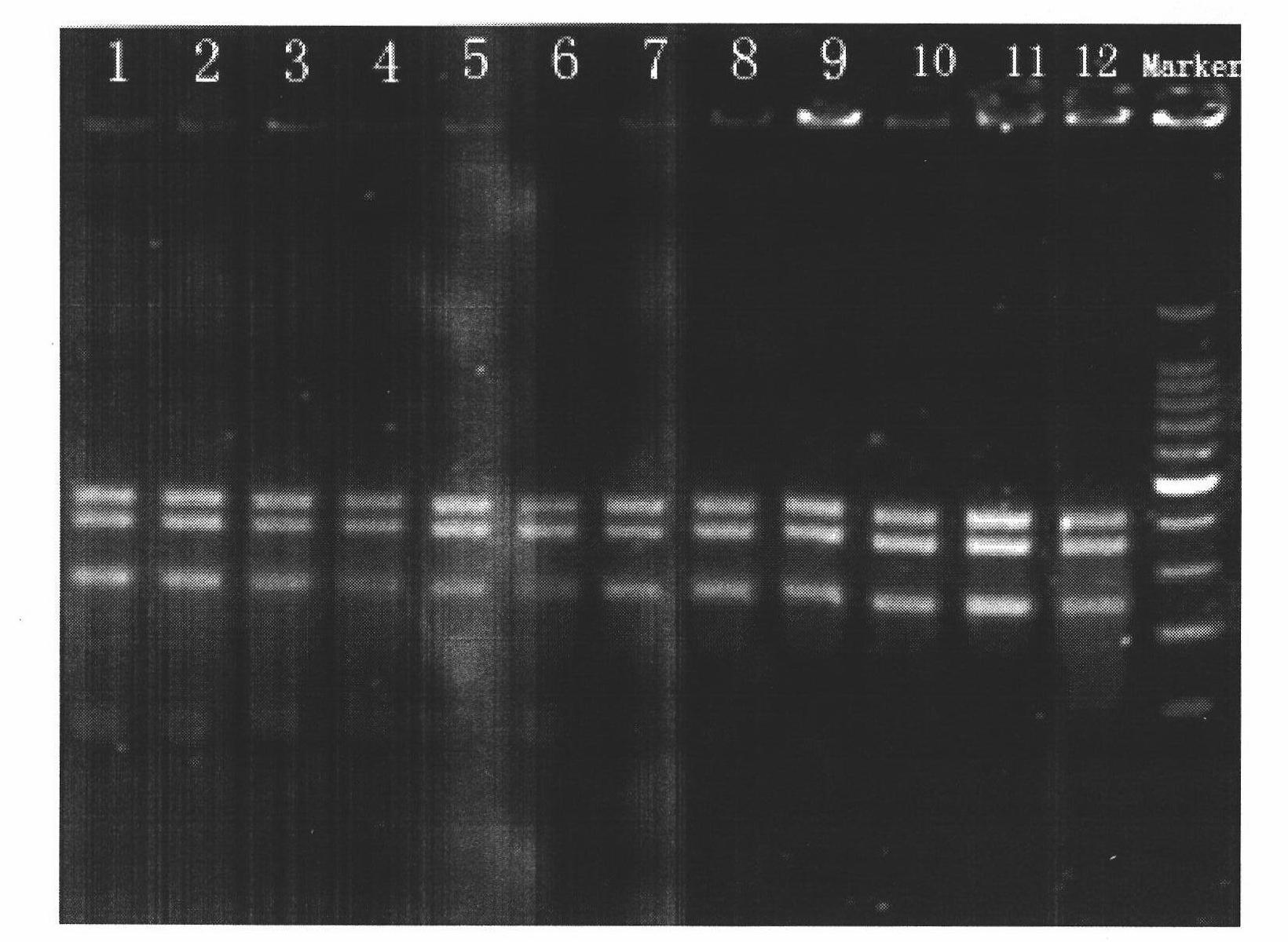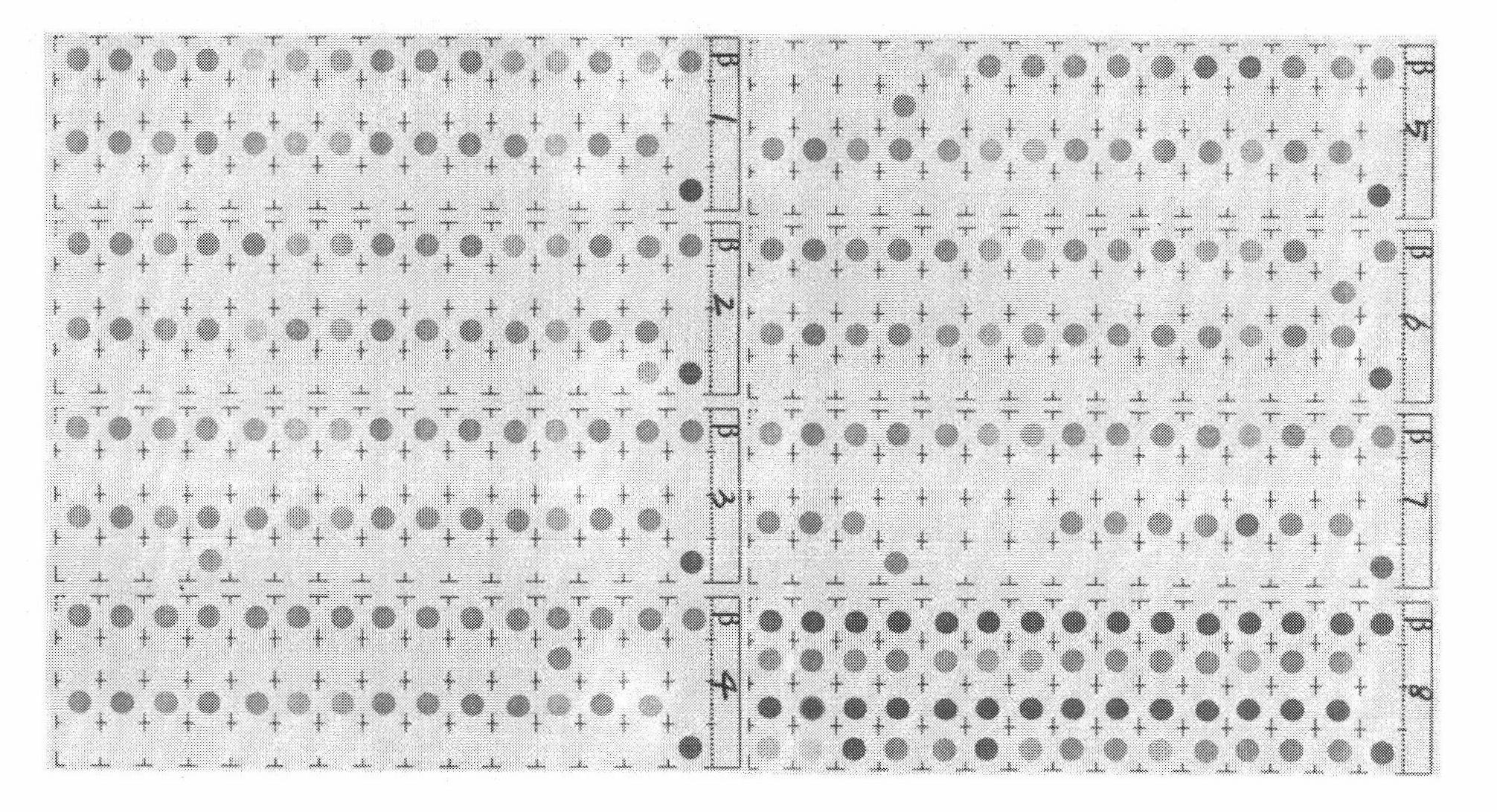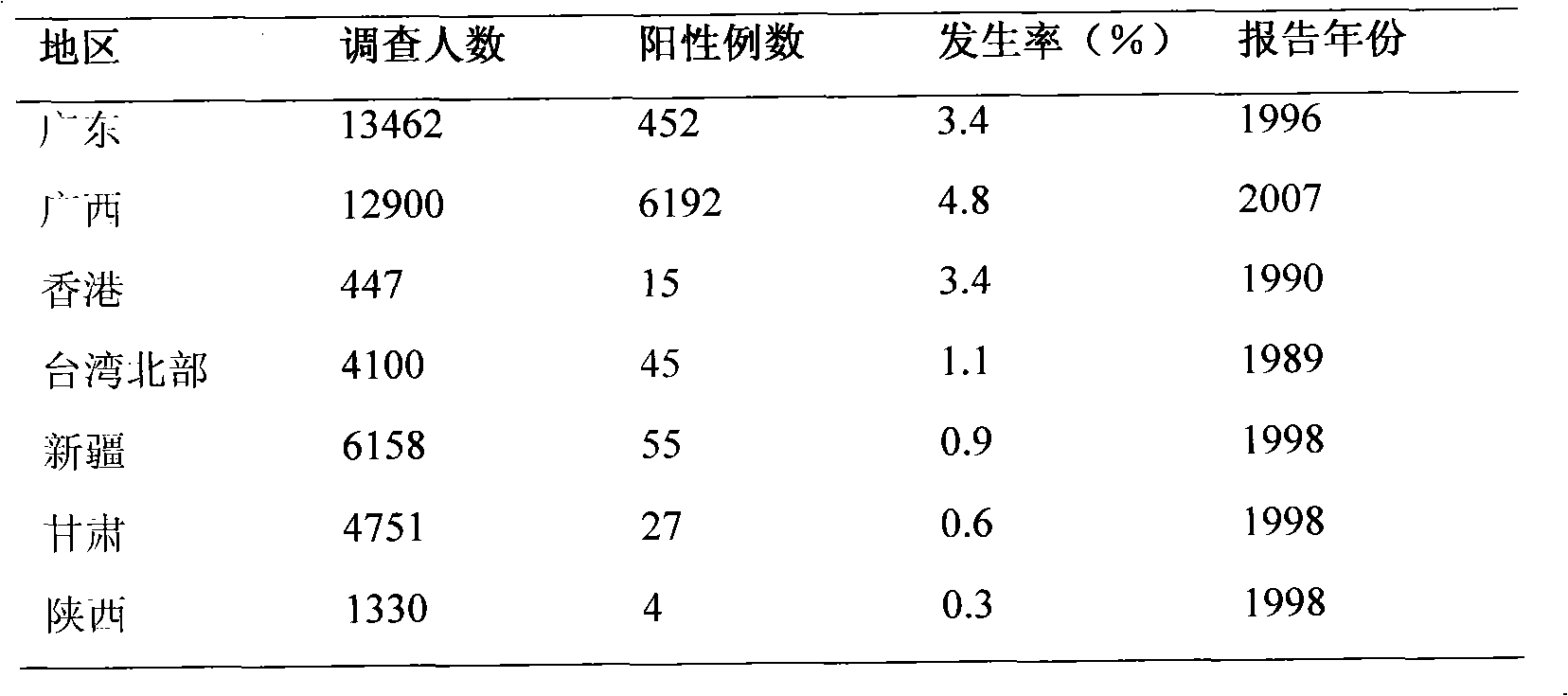Beta-thalassemia mutation detection kit
A technology for thalassemia and mutation detection, which is applied in the field of kits for detecting β-thalassemia nucleotide polymorphisms, and can solve the problems of inability to detect mutations and lengthy hybridization process.
- Summary
- Abstract
- Description
- Claims
- Application Information
AI Technical Summary
Problems solved by technology
Method used
Image
Examples
Embodiment 1
[0039] The preparation of embodiment 1 sample target nucleic acid
[0040] 1) EDTA anticoagulated whole blood collected from 6 clinical cases, and gently invert the glass tube to mix 5-10 times.
[0041] 2) Take a 1.5ml clean centrifuge tube and mark the tube cap with a Mark pen. Add 300μl of mixed anticoagulant blood into a centrifuge tube, add 1ml of sterilized double distilled water, mix well, and place at room temperature for 3 minutes.
[0042] 3) Centrifuge at 3000 rpm for 5 minutes at room temperature. Discard the supernatant and keep the maroon precipitate.
[0043] 4) Repeat the above steps once. Remove as much residual liquid as possible.
[0044] 5) Add DNA extraction solution (5% Chelex-100) and mix thoroughly. Water bath at 100°C for 10 minutes, centrifuge at 10,000 rpm for 5 minutes, and store at -20°C for later use.
Embodiment 2
[0045] The PCR amplification of embodiment 2 target nucleic acid
[0046] PCR reagents use hot start enzyme or Taq enzyme reaction system, which are hot start enzyme reaction system and Taq enzyme reaction system respectively, wherein Taq enzyme is produced by NEB company, hot start enzyme is produced by Fermentas, 10× hot start PCR buffer and Taq 5×Master Mix is also commercially available, and the preparation of the reaction system is as follows:
[0047]
[0048] For the PCR reaction system, directly add 2 μl of the extracted DNA template, centrifuge briefly (3 seconds), and put each reaction tube into the PCR instrument.
[0049] Hot start enzyme reaction system amplification conditions: 95°C for 15min, then 94°C for 30s, 56°C for 45s, 72°C for 60s, 45 cycles, and finally 72°C for 7min.
[0050] Taq enzyme reaction system amplification conditions: 94°C for 5min, then 94°C for 30s, 56°C for 45s, 72°C for 60s, 45 cycles, and finally 72°C for 7min.
[0051] The amplifi...
Embodiment 3
[0052] Embodiment 3 Preparation of low-density gene chip
[0053] The low-density gene chip carrier is a nylon membrane, and the membrane strip needs to be used with 10% EDC-HCl (1-(3-dimethylaminopropyl)-3-ethylcarbodiimide hydrochloride, Sigma company) solution before use Fully soak and activate for 60 minutes, wash with pure water twice for 3 minutes each time, and then dry at room temperature. The freeze-dried powder of the probe was centrifuged at 12000rpm for 5 minutes, then dissolved in sterilized pure water to 10μM, and then 1.0μl per well was directly applied to the appropriate position of the membrane strip in a fixed format, as follows:
[0054] Low Density Gene Chip Probe Array
[0055]
[0056] After spotting the sample, let it stand at room temperature for 2 hours, treat the membrane strip with 0.1M NaOH solution for 10 minutes, wash it thoroughly with distilled water, dry it at room temperature and store it at 4°C for later use.
PUM
 Login to View More
Login to View More Abstract
Description
Claims
Application Information
 Login to View More
Login to View More - R&D
- Intellectual Property
- Life Sciences
- Materials
- Tech Scout
- Unparalleled Data Quality
- Higher Quality Content
- 60% Fewer Hallucinations
Browse by: Latest US Patents, China's latest patents, Technical Efficacy Thesaurus, Application Domain, Technology Topic, Popular Technical Reports.
© 2025 PatSnap. All rights reserved.Legal|Privacy policy|Modern Slavery Act Transparency Statement|Sitemap|About US| Contact US: help@patsnap.com



